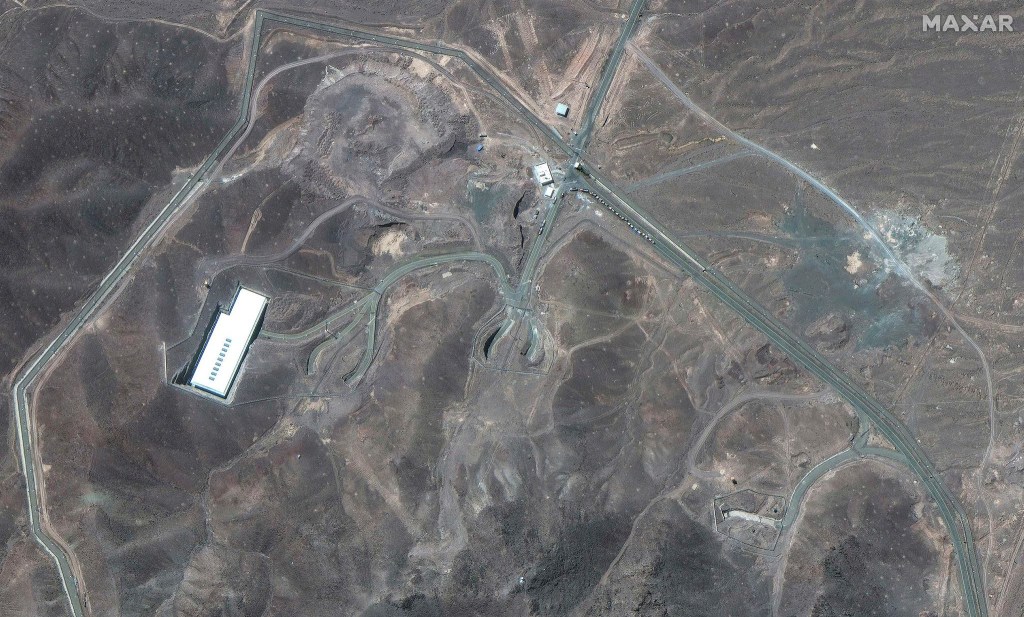The United States carried out a “successful” bombing attack at three Iranian nuclear sites on Sunday — with President Donald Trump claiming that the locations had been “obliterated”. Operation Midnight Hammer involved seven B-2 Spirit bombers carrying 30,000-pound bunker-buster bombs and more than two dozen cruise missiles launched by a US submarine. Top officials have since insisted that the attacks ‘set back the Iranian nuclear program by a very long time’. Satellite images however raise several key questions about the effectiveness of the US strikes.
The US struck three key nuclear sites in Iran in the early hours of Sunday — Natanz, Esfahan, and Fordow. Six bunker buster bombs were dropped on Fordow while 30 Tomahawk missiles were fired against other nuclear sites. Experts, however, suggest that the US may have failed to impact the Iranian nuclear program beyond the obvious damage.
According to images released by Maxar Technologies, the Fordow nuclear site saw heightened activity over the past few days — until hours before the US attack. Dozens of trucks were seen gathered near the entrance to the nuclear facilities between June 19 and 20 with heavy machinery and later appeared to move (mostly) northwest of the Fordow facility. Many on social media including geo-intelligence researcher Damien Symon have since flagged it as a “possible logistics shuffle” at the site.
“The damage to the Nuclear sites in Iran is said to be ‘monumental’. The hits were hard and accurate. Great skill was shown by our military…A full payload of bombs was dropped on the primary site, Fordow. Fordow is gone,” Trump added via Truth Social.
Similar images have also emerged from Isfahan with experts suggesting that the trucks might be sealing tunnels that serve as entrances to underground facilities used to store uranium, possibly in anticipation of an American attack. Satellite images on Sunday showed six deep holes in the ground around Fordow and ashy debris over much of the site.
“There were trucks seen in imagery apparently hauling stuff away. One would assume that any enriched uranium stocks were hauled away…I think you have to assume that significant amounts of this enriched uranium still exist, so this is not over by any means,” David Albright — the president of the Institute for Science and International Security — told NPR.
According to a source-based CNN report, Isfahan was not hit with bunker-buster bombs via B-2 bombers. The facility was instead targeted by more than two dozen Tomahawk cruise missiles, which hit buildings and tunnel entrances at the site. Isfahan is believed to have nearly 60% of Iran’s stockpile of already-enriched nuclear material stored underground. But experts who reviewed satellite imagery have suggested that most of the damage to the facility was restricted to aboveground structures.

